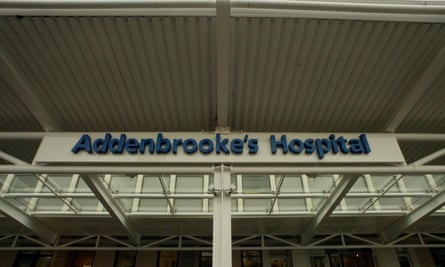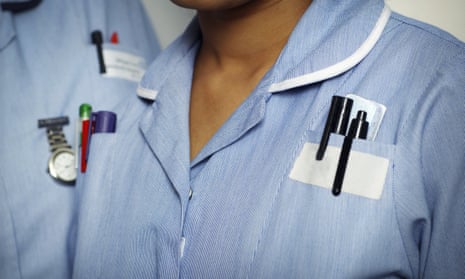Hospitals are being told to shed staff to rescue the NHS from an acute funding crisis, leaving nurses and other frontline medical workers at risk of the sack.
NHS regulators have taken the controversial decision despite intense concern among hospital bosses and health unions that reducing staff will hit quality of care, patient safety and staff morale, while increasing waiting times.
Monitor and the NHS Trust Development Authority (TDA) have issued the instruction to reduce staffing almost three years after ministers ordered hospitals to do the opposite. They responded to the official report into the Mid Staffs care scandal by saying staffing levels must be increased in order to improve the standard of care.
Critics warn that, with some NHS trusts falling as much as £60m into the red, the move could lead to hospitals being forced to shed hundreds of staff in a bid to balance their books, with nurses and managers the most vulnerable to being axed.
Addenbrooke’s hospital in Cambridge, for example, has been losing £1.2m a week during 2015-16 and could end the year £60m in deficit. St George’s hospital in south London is also expected to record a deficit of about £46.2m.
To save £1m, a trust would have to lose 25 nurses, according to the influential King’s Fund thinktank.
The regulators’ decision to jettison the approach of the past three years of prioritising staffing levels ahead of financial rectitude has been prompted by the NHS’s increasingly frantic efforts to tackle the spiralling deficit which hospitals in England are racking up, projected to be £2.2bn by the end of March.
Some of the hospital trusts that are most in the red have been told to use “headcount reduction” to reduce their deficit for 2015-16.
The order is contained in a letter Monitor and the TDA sent on 15 January to every one of the 241 NHS trusts they supervise, which outlined the measures they needed to be taking to try and make their books balance. It told trusts to dramatically reduce their “financial distress” if they wanted to receive money from a £1.8bn bailout that becomes available in April and is aimed at finally stabilising NHS finances.
The letter, signed by the TDA deputy chief executive, Bob Alexander, and his Monitor counterpart, Stephen Hay, says: “We will be meeting a number of challenged providers this month to agree a set of actions, including headcount reduction, additional to the current plan, with the clear intention of improving the financial position of those individual providers.”

The move prompted immediate warnings that patients would suffer.
“If trusts do begin to reduce headcount the impact on patients would be swift, through either rising waiting times or reduced quality of care or both,” said Richard Murray, the King’s Fund’s director of policy. “Three years on from Robert Francis’s report into Mid Staffs, which emphasises that safe staffing was the key to maintaining quality of care, the financial meltdown in the NHS now means that the policy is being abandoned for hospitals that have run out of money.”
Labour’s Heidi Alexander, the shadow health secretary, said: “At the last election, the Tories promised to ensure hospitals had enough staff to meet patient demand. However, less than a year later they’re asking hospitals to draw up plans to reduce staff numbers.”
Howard Catton, the Royal College of Nursing’s director of policy, said: “Patients will suffer without the right number of skilled and experienced frontline staff in place. Fewer staff dealing with more patients will only lead to longer and completely preventable hospital stays, and patients will feel the impact of not having the right number of skilled and experienced frontline staff in place.”
Almost all of the foundation trust hospitals regulated by Monitor – which are semi-independent of NHS control – are deemed to be financially “challenged” and 26 of them have overspent by so much that they are receiving bailouts from the Department of Health to help pay their bills. The spiralling cost of employing expensive agency staff, which is set to cost the NHS £4bn this year, is the single biggest reason for the £2.2bn overspend.
In a further letter Monitor and the TDA sent on 22 January trusts were also advised to save money by extending the life of “plant, machinery and equipment” wherever possible. This raises the prospect of key equipment such as CT and MRI scanners, used to identify cancer, infections and broken bones, continuing to be used beyond the expected end of their working lives.
The chief executive of one of England’s biggest trusts, speaking anonymously, said the drive to reduce staff numbers was reckless and counterproductive.
The chief executive said: “They are signalling fewer people working for the NHS. What they don’t seem to appreciate is that it’s hands-on business and you need the hands on. If we aren’t careful we will be driving the NHS off a crisis cliff. The reality is that there isn’t enough money going into the NHS for it to do its job properly.”
A Department of Health spokesman said: “We expect all parts of the NHS to have safe staffing levels – making sure they have the right staff, in the right place, at the right time.” He said the NHS now employed 6,100 fewer managers and almost 30,000 more clinical staff than in 2010.

Comments (…)
Sign in or create your Guardian account to join the discussion